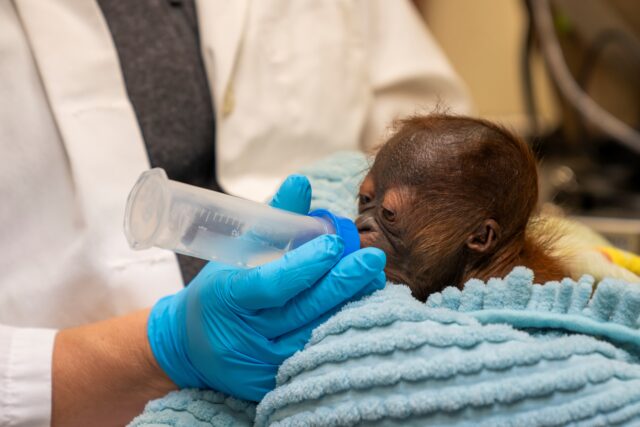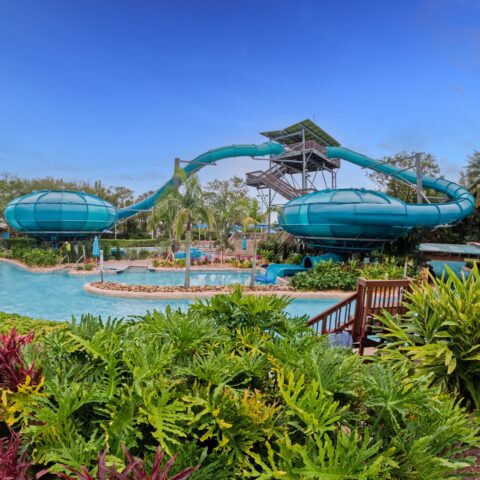Ground-breaking new research is being conducted with killer whales at SeaWorld California to assess the dynamics of persistent organic pollutant (POP) transfer from female killer whales to their calves during gestation and lactation.
It is hoped that the results of this multi-year study will help scientists understand how pollutant transfer impacts the endangered Southern Resident population of killer whales in the Pacific Northwest. The salmon that the Southern Resident group feeds on is known to have higher levels of contaminants.
Dr. Dawn Noren, a research fishery biologist with the National Marine Fisheries Service’s Northwest Fisheries Science Center in Seattle, is studying milk and blood serum samples from Kalia, a lactating killer whale at SeaWorld who gave birth to a calf in December 2014. By analysing these samples, Noren will be able to assess the transfer of contaminants in milk from females to their calves during lactation. Blood samples from Kalia’s calf, Amaya, are also being analysed.
The high levels of persistent organic pollutants in the endangered Southern Resident killer whales in the Pacific Northwest may be having a harmful impact on this distinct killer whale population. Blubber samples have been collected from free-ranging Southern Resident killer whales to quantify contaminant levels in individual whales in previous studies and it is known that levels of pollutant in salmon in the Pacific Northwest are increased but there are no empirical data on how body burdens change in killer whale females and calves during gestation and lactation.
The organic pollutants, which include Dichlorodiphenyltrichloroethanes (DDTs), Polychlorinated biphenys (PCBs) and Polybrominated Diphenyl Ethers (PBDEs), have been linked to reduced immune system efficiency and reproductive failure in other wild animal species. These compounds are transferred from mothers to their offspring during gestation and lactation and have heath implications, particularly to first-born offspring who may receive higher concentrations of pollutants through maternal transfer.
“The dynamics of pollutant transfer over the course of lactation have been studied in live pinnipeds, but are less understood in cetaceans,” said Noren. “Because the life history patterns of pinnipeds differ from cetaceans, studies conducted on cetaceans, specifically killer whales, are warranted.”
“We are aiming to determine when the bulk of contaminants are transferred from the mother to her calf during a one-year lactation period and estimate the proportion of the female’s contaminant body burden transferred to her calf during this period,” said Noren. “We also want to quantify pollutant levels circulating in the blood of the female and calf to assess when during the lactation period young wild killer whales and their mothers might be most susceptible to health effects from contaminant exposure.”
Noren’s research is a crucial, first-of-its-kind study to directly assess contaminant transfer from female killer whales to their calves as well as determining circulating pollutant levels. Repeated access to healthy killer whales at SeaWorld over the course of lactation in a controlled and safe environment is the only way Noren’s research is possible.
“Our killer whales have been trained to participate in their own husbandry care which allows us to assist researchers in a variety of important scientific studies,” said Dr. Todd Schmitt, SeaWorld California’s senior veterinarian. “In the case of this study, even though the pollutant levels in SeaWorld killer whales are lower than that of the Resident whales due to their distinct diets, the results of this study can still be used to develop a clearer picture of the contaminant transfer process from females to their calves.”
While the intent is to gather data from multiple killer whale mothers and calves at SeaWorld over the next several years, the initial information acquired from this study with Kalia can be incorporated into future models that predict contaminant levels in individual whales and will inform risk assessments of pollutant-related health issues to wild Southern Resident killer whales.
Back to news

